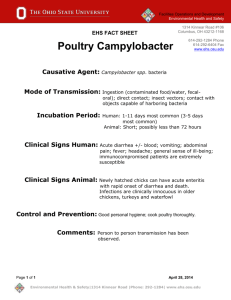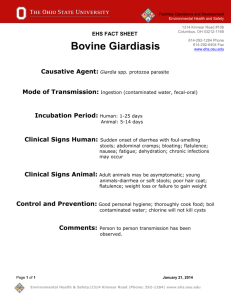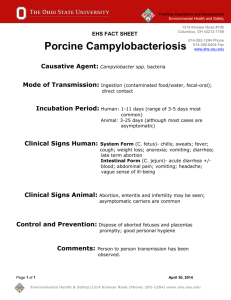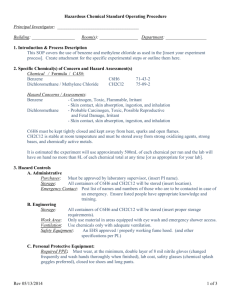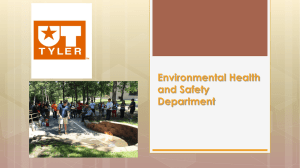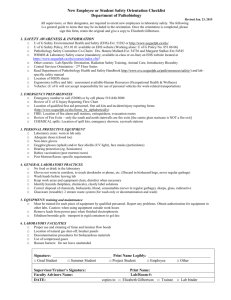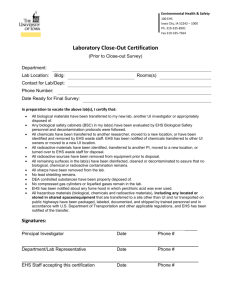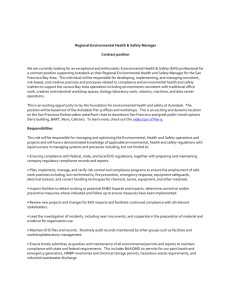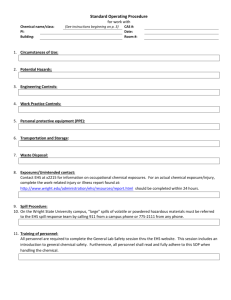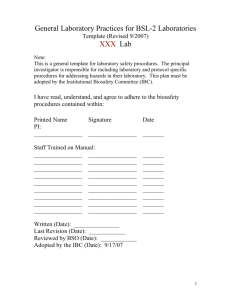Hazardous Chemical SOP Template
advertisement
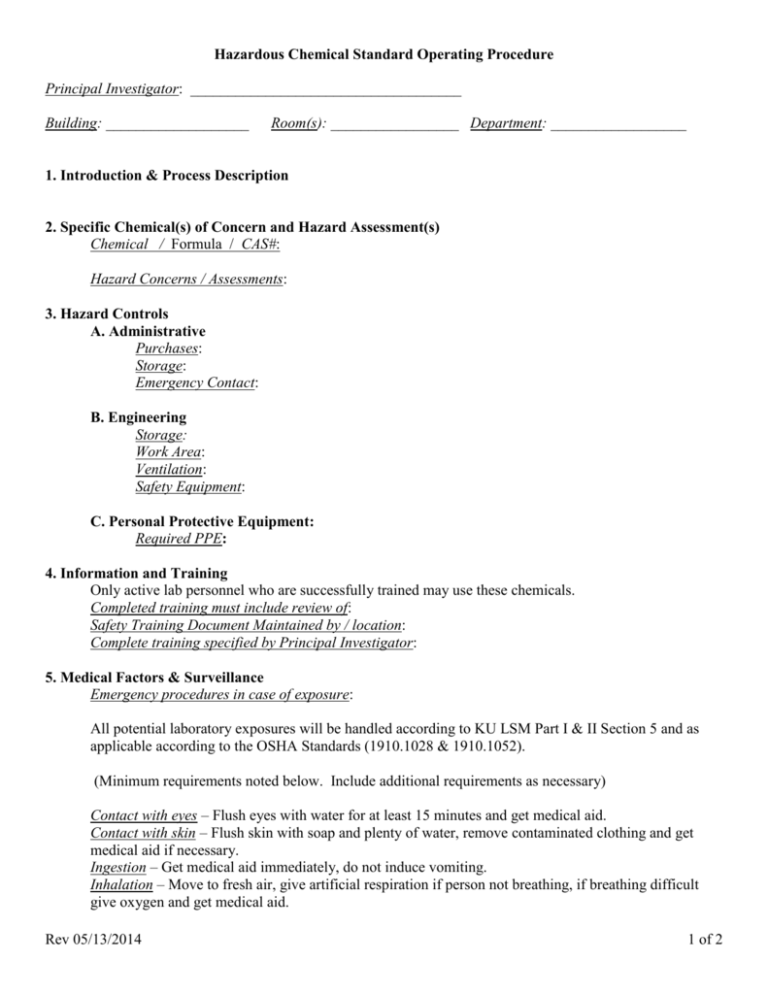
Hazardous Chemical Standard Operating Procedure Principal Investigator: ____________________________________ Building: ___________________ Room(s): _________________ Department: __________________ 1. Introduction & Process Description 2. Specific Chemical(s) of Concern and Hazard Assessment(s) Chemical / Formula / CAS#: Hazard Concerns / Assessments: 3. Hazard Controls A. Administrative Purchases: Storage: Emergency Contact: B. Engineering Storage: Work Area: Ventilation: Safety Equipment: C. Personal Protective Equipment: Required PPE: 4. Information and Training Only active lab personnel who are successfully trained may use these chemicals. Completed training must include review of: Safety Training Document Maintained by / location: Complete training specified by Principal Investigator: 5. Medical Factors & Surveillance Emergency procedures in case of exposure: All potential laboratory exposures will be handled according to KU LSM Part I & II Section 5 and as applicable according to the OSHA Standards (1910.1028 & 1910.1052). (Minimum requirements noted below. Include additional requirements as necessary) Contact with eyes – Flush eyes with water for at least 15 minutes and get medical aid. Contact with skin – Flush skin with soap and plenty of water, remove contaminated clothing and get medical aid if necessary. Ingestion – Get medical aid immediately, do not induce vomiting. Inhalation – Move to fresh air, give artificial respiration if person not breathing, if breathing difficult give oxygen and get medical aid. Rev 05/13/2014 1 of 2 6. Waste Disposal Chemical waste – to EHS Chemical waste must be disposed of in accordance with the KU LSM Part II Section 6.1-6.4 and KU EHS Hazardous Materials Waste Management Manual. Waste must be stored in EHS approved container. Waste container must be labeled “Hazardous Waste” and a strict list of contents / dates added must be kept. When container is full complete an Official EHS Hazardous Materials Label and immediately contact EHS for a pick-up (www.ehs.ku.edu). Animal Carcass & Bedding Waste – Incineration by ACU Bedding waste and animal carcasses will be labeled and bagged separately from our normal lab animal waste and sent to KU Animal Care Unit. Chemical spills – cleanup waste to EHS In case of small spill use proper PPE as indicated above. Remove all sources of ignition and provide ventilation. For powder spills, sweep powder without raising dust and contact EHS for disposal. Air the affected area and wash spill site thoroughly. For solution spills, use supplied spill kit materials to absorb spill and place contaminated materials into trash bag(s) and place back into bucket. Secure bucket lid and contact EHS (www.ehs.ku.edu) for waste pick-up. For large spills vacate room, close door and call EHS 785-864-4089. 7. Record Keeping All potential laboratory exposures will be handled according to the KU LSM Part I & II Section 7 and as applicable according to the OSHA Standards (1910.1028 & 1910.1052). 8. Attachment of SDS(s) and other necessary sheets SDS attached. APPROVALS Written by: __________ Date: __________ Approved by PI: __________ Date: __________ Approved by: ____________ Mike Russell KU-EHS Dept. Date: __________ EHS Permit/Approval#: _______________ Rev 05/13/2014 2 of 2

